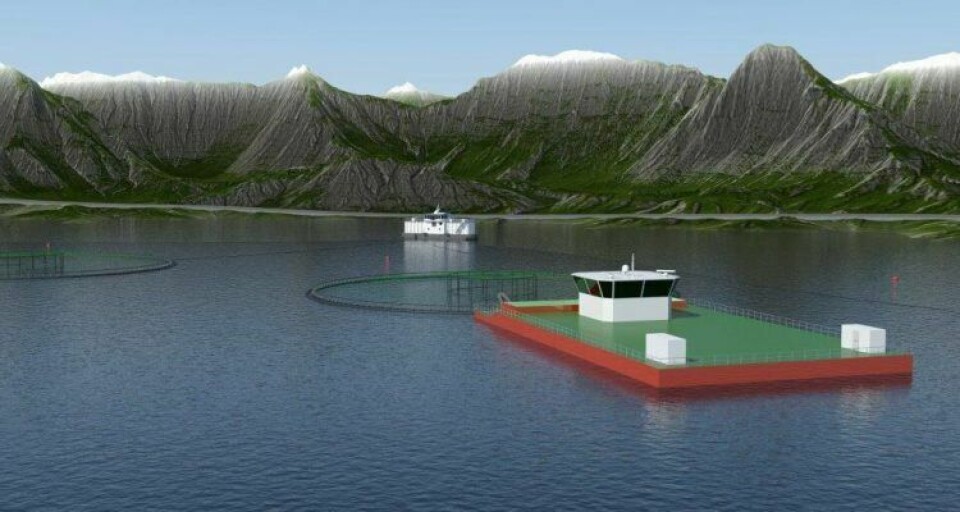
Concessions sought for novel treatment barge
AquaStar Invest has applied for six development concessions based on developing a treatment barge that uses patented technology to gently transfer fish from cages.
The founders Svein Martin Sæle, his son Martin Sæle and Nils Landro are working with six Hordaland producers, and have applied for six development permits totalling 4,680 tonnes. Their application involves a siphon-based concept that gently moves the fish from the cages into a barge, where they can be processed.
The companies involved are Telavåg fiskeoppdrett, Troland Lakseoppdrett, Langøylaks, Engesund Fiskeoppdrett, Tombre Fiskeanlegg and Lingalaks and these will help advise on the development of the concept in exchange for the chance to get a licence each,” Sæle told kyst.no.
“The idea is a barge which is 70m long and 32m wide with a 6,000m3 capacity which is equipped with technology to gently move fish using the siphon principle,” says Sæle, who has extensive experience with wellboats.
The barge is, according to Sæle, twice as large as the largest wellboats, making it capable of treating an entire cage simultaneously.
“We can, for example, fill the barge with fresh water to gently remove lice, or we can combine it with new systems such as an Optilicer, Hydrolicer or Thermolicer,” he observes.
The barge will be equipped with propellers and be able to remain stable at a farm site without damaging the mooring facility, although it would need to be towed between sites. The vessel will cost up to NOK 400 million, but Sæle thinks this is good value.
“It is estimated that it will cost around 300-400 million for a barge, but it will be cheaper and more efficient [than wellboats],” says Sæle.
The investment cost is evenly divided between the parties. The actual work on the patent began two years ago – before the regulations for development concessions were clear – and now the patents have been approved.
Sæle believes that too many chemical treatments have been used against lice over time and that more tools are needed in the toolbox.
“With this solution, we want to improve fish welfare and reduce chemical use,” he explains.























































